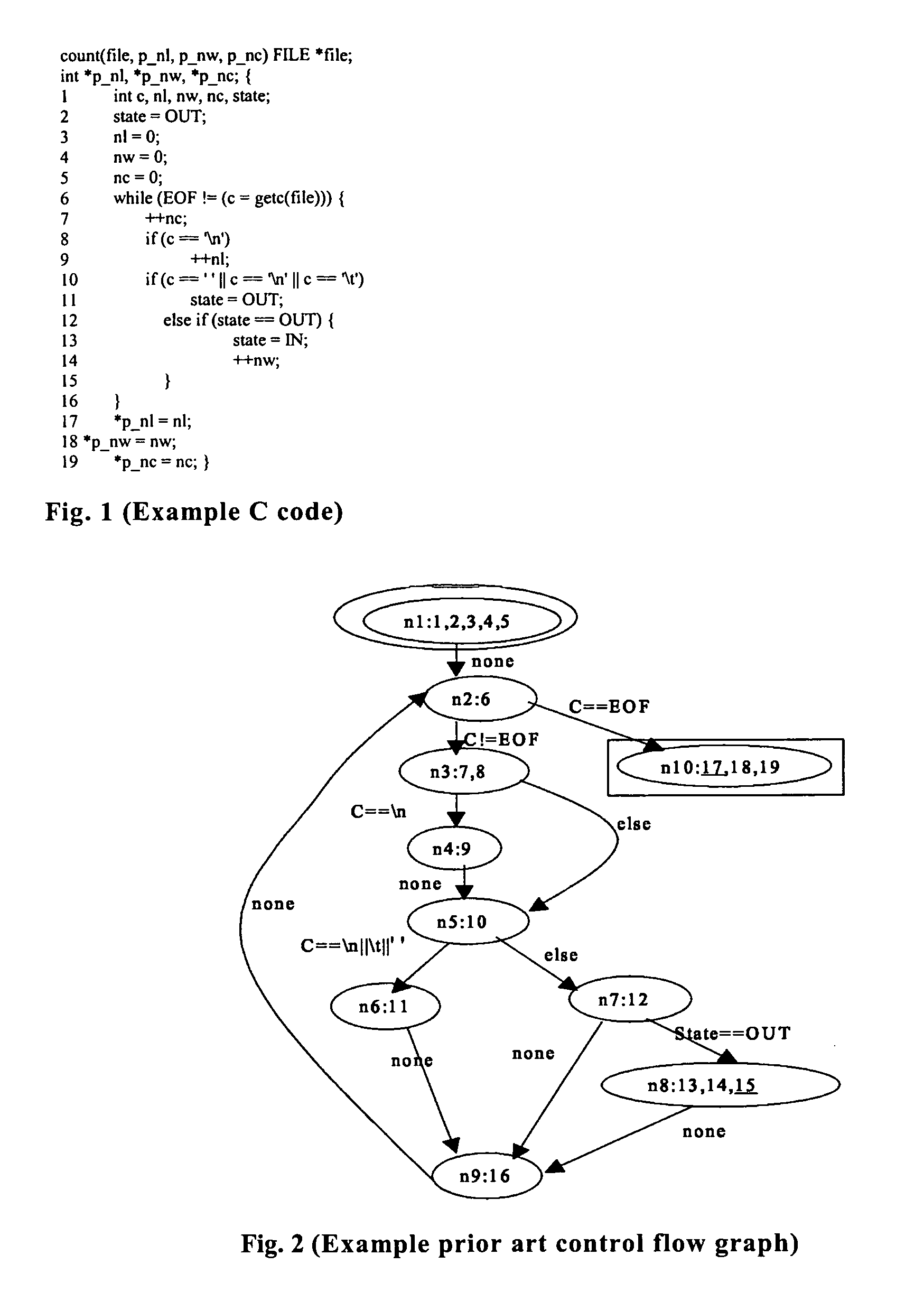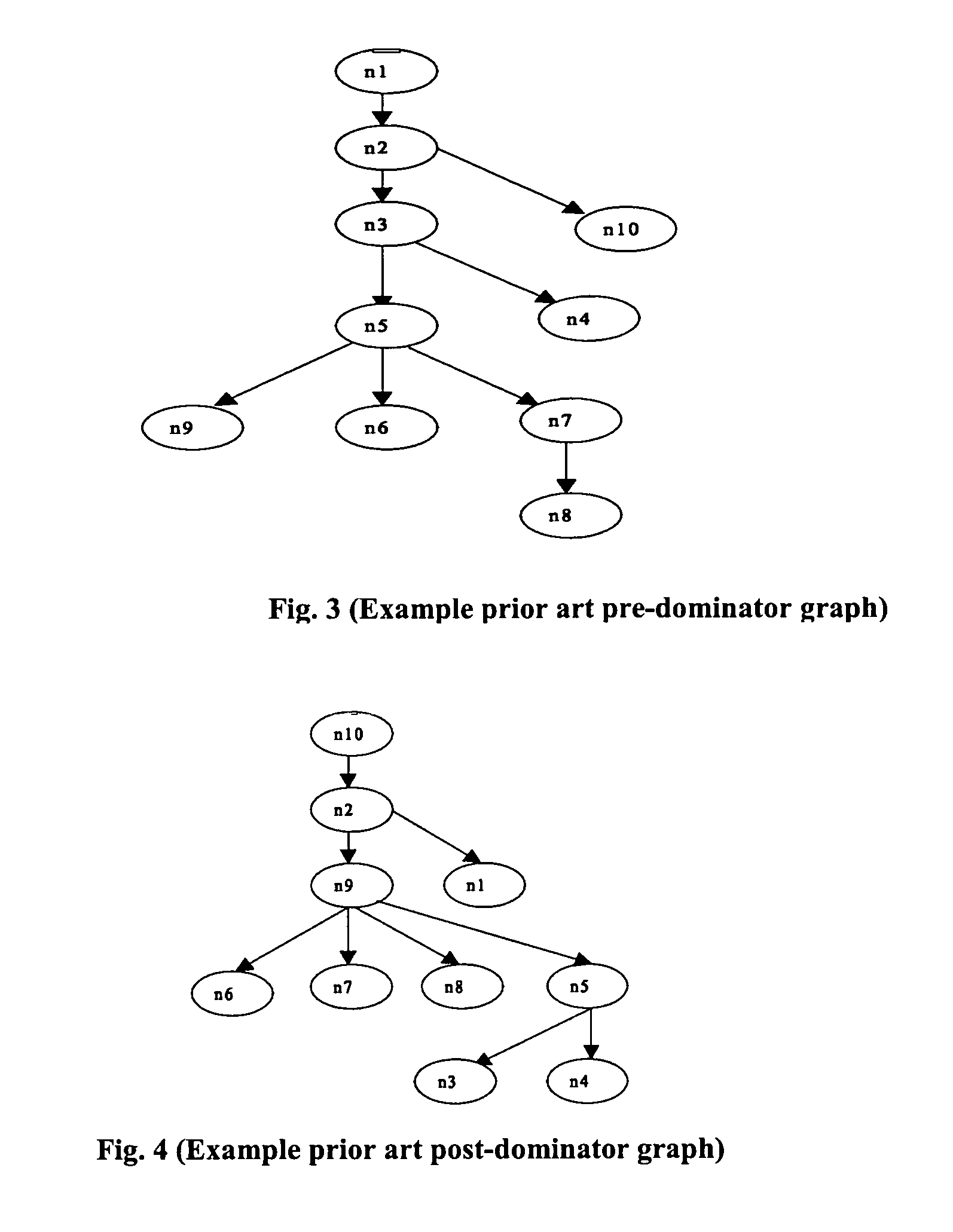Handling loops in programs and examining feasible software behavior for detecting malicious code
a loop and loop technology, applied in the field of software code testing, can solve the problems of large computational resources consumed by dominator analysis calculations, limited research on improving testing, and large number of operators, so as to reduce the complexity of each constraint, reduce processing and memory resources, and reduce the number of operators
- Summary
- Abstract
- Description
- Claims
- Application Information
AI Technical Summary
Benefits of technology
Problems solved by technology
Method used
Image
Examples
Embodiment Construction
Code Coverage Priority Determination Using Invocable Program Elements
[0108]In a first aspect of the present disclosure, a description of how a code coverage priority determining method (such as the prior art dominator analysis method) can be augmented with priority information obtained from invocable program elements (e.g., subprograms, and object-oriented methods) so that resulting code coverage priorities are more accurately determined. In particular, such augmentation has provided a method referred to herein as the “global priority estimation method”. An example is first provided to illustrate how global priority estimation method can be incorporated into a code coverage priority determining method. Consider a C++ class that has three methods, i.e., a method (identified as “new_count” whose code is provided below), a method m1, and a method m2, wherein the method “new_count” calls methods m1 (in line 12 below) and m2 (in line 17 line below), and the method m2 calls m1. Thus, “new...
PUM
 Login to View More
Login to View More Abstract
Description
Claims
Application Information
 Login to View More
Login to View More - R&D
- Intellectual Property
- Life Sciences
- Materials
- Tech Scout
- Unparalleled Data Quality
- Higher Quality Content
- 60% Fewer Hallucinations
Browse by: Latest US Patents, China's latest patents, Technical Efficacy Thesaurus, Application Domain, Technology Topic, Popular Technical Reports.
© 2025 PatSnap. All rights reserved.Legal|Privacy policy|Modern Slavery Act Transparency Statement|Sitemap|About US| Contact US: help@patsnap.com



